Size : 30-40CM
The Rubber Plant, scientifically known as Ficus elastica, is a popular and versatile houseplant admired for its glossy, dark green leaves and attractive growth habit. With its vibrant foliage and easy-care nature, it adds a touch of elegance and natural beauty to any indoor environment.
Appearance:
The Rubber Plant features large, leathery leaves that are typically dark green in color and have a shiny appearance. The leaves are thick and oval-shaped, with prominent veins running through them. As the plant matures, it develops a tree-like form, with a sturdy trunk and a well-defined canopy of foliage. Some varieties of Rubber Plant may exhibit variegated or burgundy-colored leaves, adding further visual interest.
Care Tips:
Light:
Place the Plant in bright, indirect light. It can tolerate some shade but prefers moderate to bright light conditions. Avoid exposing it to direct sunlight for extended periods, as it can scorch the leaves. Insufficient light may result in leggy growth and reduced leaf coloration.
Temperature:
Maintain a temperature range of 60°F to 75°F (15°C to 24°C). Rubber Plants are sensitive to cold drafts, so protect them from chilly air and sudden temperature fluctuations. They thrive in warm and stable conditions.
Watering:
Water the Plant when the top inch (2.5 cm) of soil feels dry. Allow the soil to partially dry out between waterings, but do not let it become completely dry. Avoid overwatering, as it can lead to root rot. During winter, reduce watering frequency.
Humidity:
Rubber Plants tolerate average room humidity, but they appreciate slightly higher humidity levels. You can increase humidity by using a room humidifier, placing the pot on a humidity tray filled with water, or occasionally misting the leaves.
Soil:
Plant the Rubber Plant in well-draining soil. A mixture of peat moss, perlite, and potting soil works well. Ensure the pot has drainage holes to prevent waterlogging.
Fertilization:
Feed the Plant with a balanced liquid fertilizer diluted to half the recommended strength every two to four weeks during the growing season (spring and summer). Reduce or stop fertilizing in winter when the plant’s growth slows down.
Pruning:
Prune the Rubber Plant to control its size and shape. Trim any leggy or overgrown branches to encourage bushier growth. Remove any yellow or brown leaves by cutting them off at the base. Regular pruning helps maintain a neat and attractive appearance.
Repotting:
Repot the Rubber Plant every two to three years or when it becomes root-bound. Choose a slightly larger pot and use fresh well-draining soil. Repotting in spring is generally recommended.
The Rubber Plant is a resilient and visually striking houseplant that brings a touch of nature indoors. With its glossy foliage and easy-care requirements, it is an excellent choice for both beginner and experienced plant enthusiasts. Embrace the elegance of the Rubber Plant and enjoy its presence as a beautiful addition to your home or office.

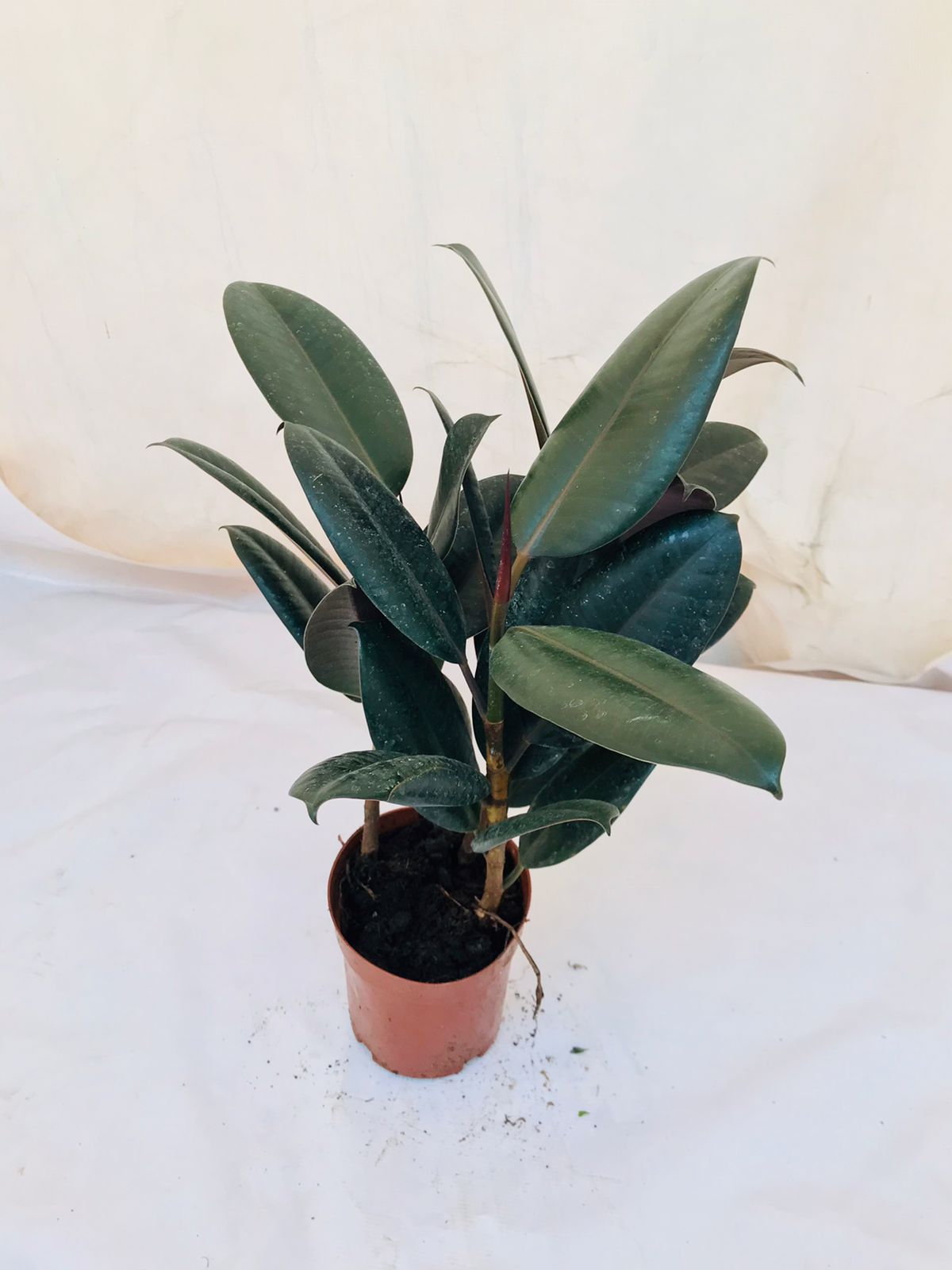
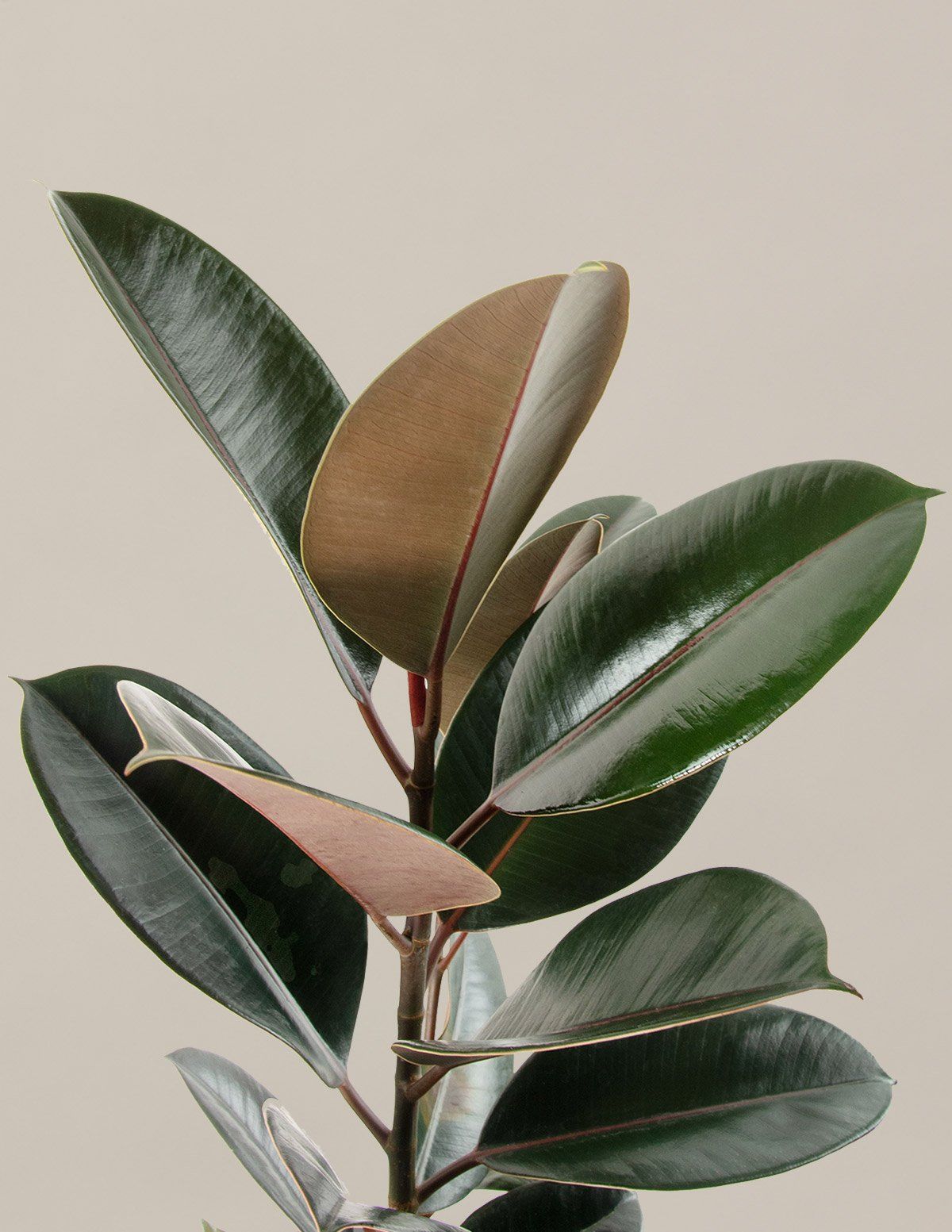
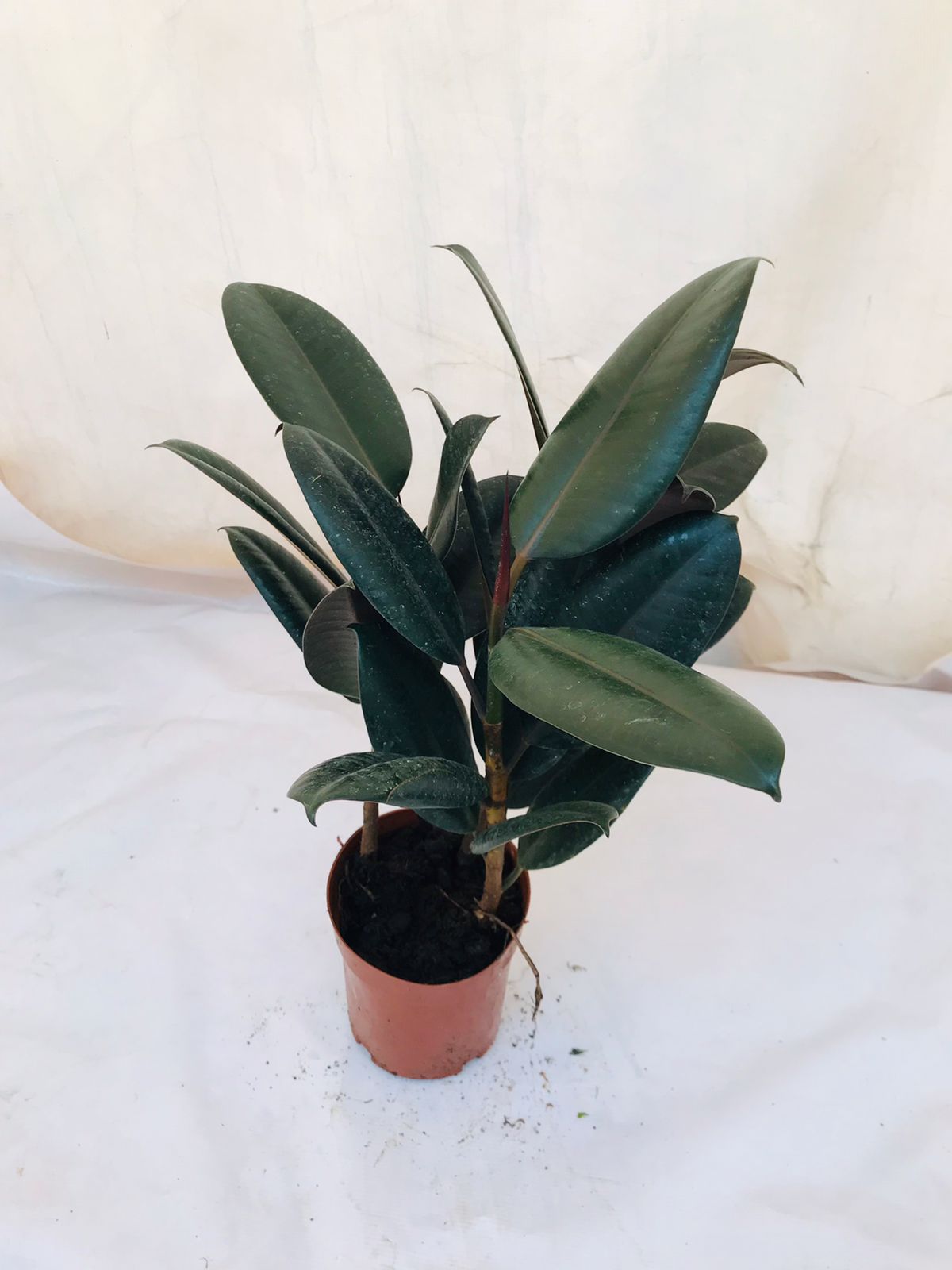
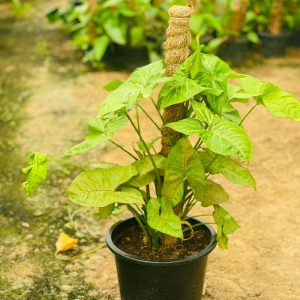

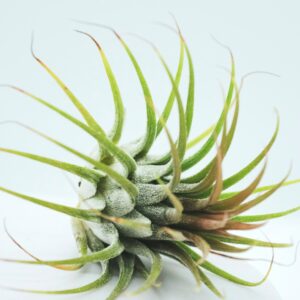
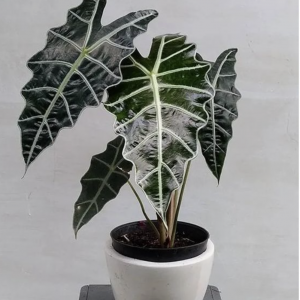
Reviews
There are no reviews yet.